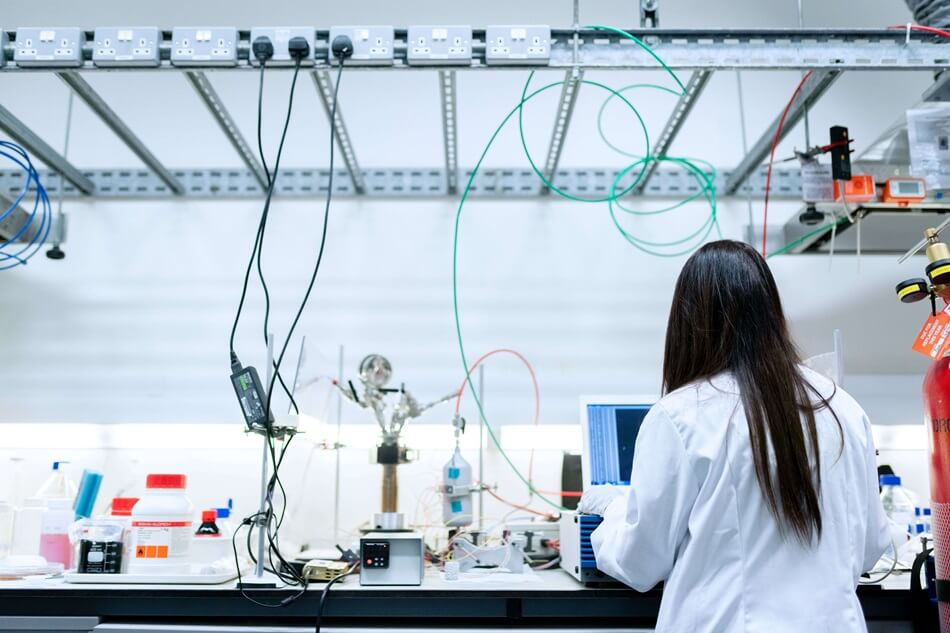Electrochemistry is a branch of physical chemistry that deals with the relationship between electrical energy and chemical energy. It is the study of processes involved in the inter-conversion of electrical energy and chemical energy.
Conductors are substances, which allow the electric current to pass through them. Eg., metals, graphite, fused salts, aqueous solutions of acids etc.
Insulators (non-conductors) are substances, which do not allow the electric current to pass through them. Eg., rubber, paper, wood, diamond etc.

Types of conductors
There are two types of conductors:
- Metallic conductors
- Electrolytic conductors
Metallic conductors: These are substances which conduct electricity, but they are not decomposed by it.
E.g., metals, graphite
Electrolytic conductors: These are substances which are in aqueous solution or in molten state liberate ions and allow electric current to pass through them resulting in chemical decomposition, Eg., acids, bases and electrovalent substances.
| S.No | Metallic conductor | Electrolytic conductors |
| 1 | Passage of current is due to movement of electrons. | Passage of current is due to movement of ions. |
| 2 | No chemical change. | Chemical change takes place. |
| 3 | Conductance decreases with increase in temperature. | Conductance increases with increase in temperature. |
Types of electrolytic conductors
The electrolytic conductors are classified into three types:
- Non electrolyte: Substances in a fused state or their solutions in water which do not conduct electric current. Eg., alcohol, oils, petrol, sugar solution.
- Strong electrolyte: Substances which have high degree of dissociation (high degree of ionisation) is known as strong electrolyte. Eg., NaCl, H2SO4,KCl.
- Weak electrolyte: Substances which have low degree of dissociation (low degree of ionisation) is known as weak electrolyte. Eg., CH3COOH,NH4OH.
Electrochemical terminology
The following terms will be used for the electrode reactions, potentials and electrochemical cells.
Current: Flow of electrons through a conductor.
Electrode: A metal form of rod/bar conducting electrons into the solution and out of the solution.
Anode: Metal at which oxidation takes place. It gives electrons to the outer circuit. It has a negative (-) charge in galvanic cells.
Cathode: Metal at which reduction takes place. It receives electrons from the outer circuit. It has a (+) charge in galvanic cells. [In electrolytic cells, the notations are reverse, anode is +ve and cathode is -ve.]
Half cell: Electrode system or each half of an electro chemical cell consisting of metallic electrode in contact with a solution to which the electrode responds.
Galvanic cell: It is a combination two half cells operating independently.
emf: The driving force is electromotive force or cell potential. It is the algebraic sum of potentials or emf of two half cells and it is measured in volts.
Redox reaction: The oxidation and reduction taking place at the two half cells is combinedly called as redox reaction.
Salt bridge : It consists of ammonium nitrate or potassium chloride in agar-agar gel. It provides electrical contact between the two half-cells.
Reference electrodes: They are standard half cells having constant electrode potentials. They are used to measure half cell potentials of various metals placed in their own salt solution. Eg., standard hydrogen electrode and saturated calomel electrode.
[sc_fs_faq html=”true” headline=”h2″ img=”” question=”What is electrochemistry?” img_alt=”” css_class=””] Electrochemistry is the study of chemical processes that involve the movement of electrons, typically through the interaction between an electrode and an electrolyte, leading to the conversion of chemical energy into electrical energy, and vice versa. [/sc_fs_faq]
| Read More Topics |
| Types of softening of water processes |
| Requirement of boiler feed water |
| Introduction of water technology |





